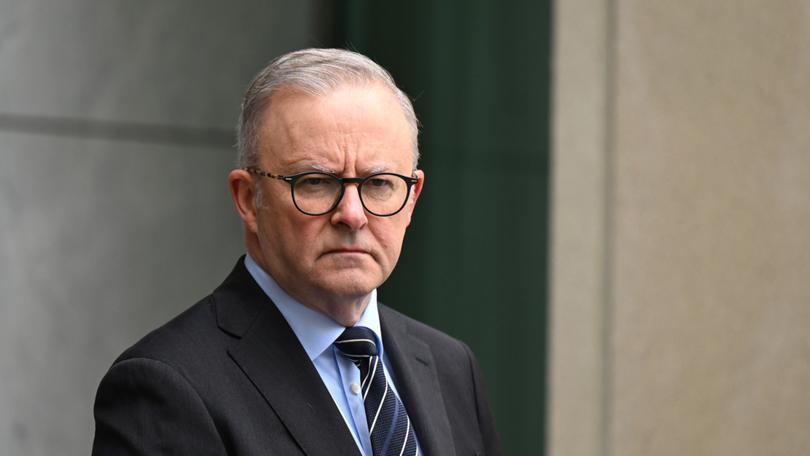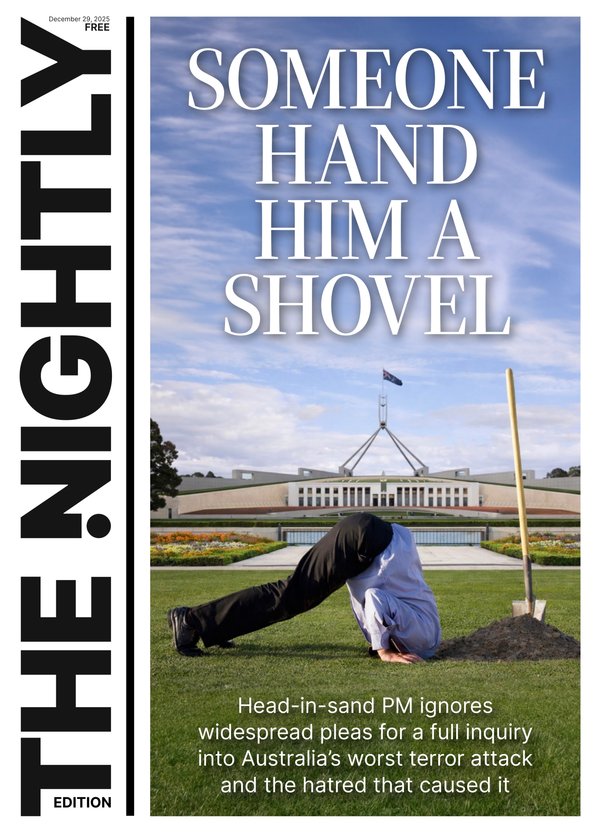KATINA CURTIS: Housing policy stand-offs & threat of double dissolution as Albo reluctant to hand Greens a win

High-stakes tactics in the Senate, accusations flying of who cares less about people having homes, threats of double dissolutions: it’s deja vu.
A little over a year ago Anthony Albanese was embroiled in a bitter fight with the Greens over housing policy and raised the spectre of pulling the rug out from everyone and going to a double dissolution election.
The Prime Minister even went so far as to commission advice from the Solicitor General about what constituted the Senate “failing to pass” his Housing Australia Future Fund legislation.
Sign up to The Nightly's newsletters.
Get the first look at the digital newspaper, curated daily stories and breaking headlines delivered to your inbox.
By continuing you agree to our Terms and Privacy Policy.The playbook over the past week has been nearly identical.
If anything, Albanese is even more angry that the Greens won’t bend to his will and back housing policies he believes match the minor party’s election platform.
The closer we move to the election, the less he wants to give the Greens anything that looks like a win.
If that means leaving the second part of his housing policy to be rejected, so be it.
If that means abandoning the environmental watchdog bit of the Nature Positive plan because the Coalition won’t accept a compromise, sorry Tanya Plibersek, but that’s how things are.
The difference between now and a year ago is few take the floated threat of a double dissolution election seriously.
Why would a leader grappling with an already unwieldy Senate crossbench risk an election with lower vote quotas that make it easier for even more “unrepresentative swill” to get in the place?
The Senate voted on Wednesday to push off a final decision on the shared equity Help to Buy bills until late November.
Albanese argues that means the Upper House has failed to pass his legislation — a constitutional technicality — and he’ll seek to reintroduce it. He says he can do this in October.
But the three-month waiting period to put something back to the Senate would suggest he has to bring back Parliament days before Christmas, force the legislation to a vote in both chambers (no easy task without the numbers in the Senate as we’ve seen this week) and then head to Yarralumla before January 24.
If all of that came to pass — and that’s pretty heroic if — the election would be between February 22 and March 29.
It’s a pretty good bet that the election is going to be in March anyway, or not too long afterwards.
It has to be held by May 17 at the latest.
Some still think the break-glass option of Albanese heading to the polls this year is live, but their number is dwindling.
There are those in Albanese’s circle who believe a February or March election is the best option while every public indication the PM has given points to a full-term Saturday in May.
This column predicted last Christmas that political circles would spend 2024 consumed with talk of election dates and hung parliaments.
So it has proven.
With every new poll, the probability of a minority government looks stronger as voters’ confidence in Albanese and his Government falls, despite the Liberals still being on the nose in many areas including WA.
Attention is starting to turn to what this means for the crossbenchers — and Greens — who might hold balance of power.
As for timing, the Federal election is proving to be like Baba Yaga’s hut, running around and settling wherever its owner sees fit, whether those nearby like it or not.
And the WA Government with its fixed-term date might not like a March Federal election much.
Noses were put out of joint earlier this year when Albanese appeared in Perth to give a speech on the eve of Roger Cook and Rita Saffioti’s first budget.
Senior ALP operatives said the politicians would just have to get used to it.
Albanese and Peter Dutton are both expected to be increasingly frequent visitors over the next eight months, which will inevitably draw attention away from their State counterparts.
As campaigning ramps up, ad space, air time and column inches will become at a premium for both sides.
The last time the WA and Federal campaigns overlapped was in 1983.
Laura Branigan’s Gloria was top of the charts, Brian Burke ousted Ray O’Connor as premier and, a mere fortnight later, Bob Hawke defeated Malcolm Fraser.
Cook and Albanese will be hoping history doesn’t repeat.

